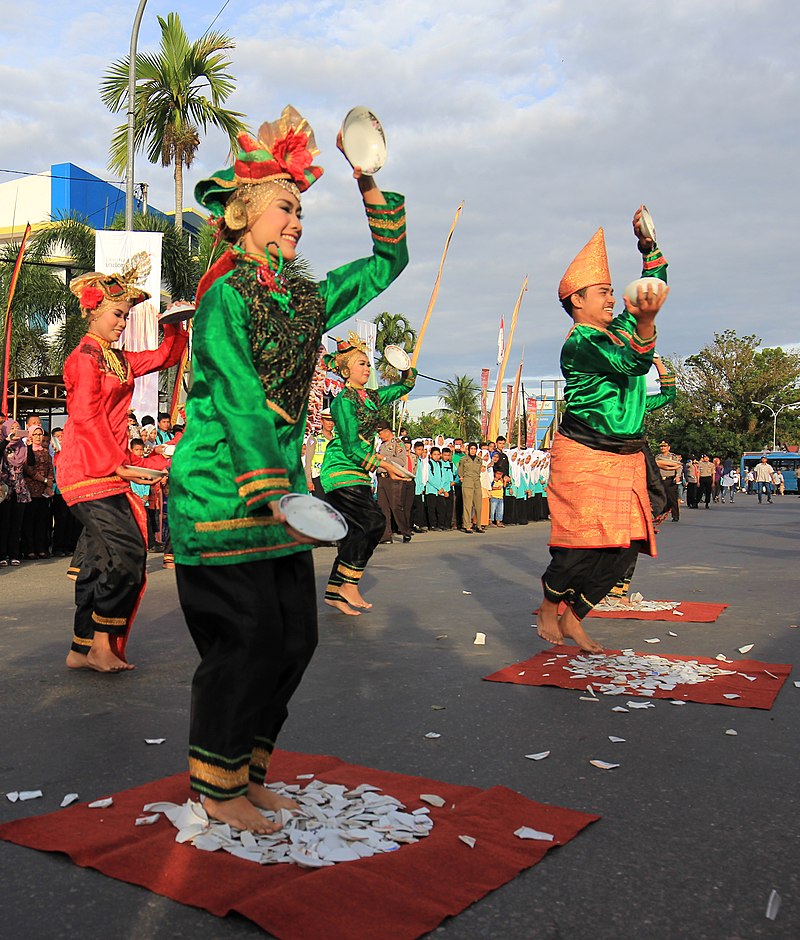Indonesia has a variety of traditional cultures and arts. The Directorate General of Culture of the Ministry of Education and Culture in the 2019 Cultural Statistics noted that there were 271 performing arts that were categorized as intangible cultural heritage. One of the intangible cultural heritages is the Melemang dance, a performing art from the Riau Islands. This energetic dance traces its history to Tanjungpisau, Penaga Village, Teluk Bintan District, Bintan Regency.
According to the Head of the Bintan Regency Culture and Tourism Office, Wan Rudi Iskandar, the melemang is a classical dance that has been performed since the 12th century. It was born as a palace dance that was performed within the scope of the Bentan Kingdom, a kingdom that once existed in the Bukit Batu area, Bintan. Served at certain times as an entertainment dance for kings and rulers in the royal circles at rest. Because it was danced in the palace environment, this dance was performed by the ladies of the Bentan Kingdom.
This dance is usually played by 14 dancers consisting of women and men. They play their respective roles. The roles of king, empress, and princess are each played by one person. Four people act as musicians, one person acts as a singer, while the remaining six people act as dancers.
Each dancer wears a typical Malay costume according to their respective roles. For tops, female dancers usually wear long brackets. While his subordinates, trousers, are combined with Malay songket cloth which is made like a skirt and belt. On the head is decorated with an edit in which a long cloth like a shawl is tucked down from the dancer’s body to the waist. Male dancers also wear long brackets as tops. But for their subordinates, they wore trousers wrapped in Malay songket cloth.
The dance is performed with musical accompaniment and typical Malay songs. The song that is sung is a Malay song with a lively and cheerful tone. The Malay song tells the story of the life of a king in a kingdom. The song is the accompaniment of the whole series of movements that are danced. The musical instruments used are accordion, gong, violin, to drum. The dance was performed for one hour.
According to the observer of Malay dance Haliz Zefri, the choreography of this dance combines zapin, joget, and host movements with dynamic patterns and requires excellent stamina. “This dance accentuates the character and beauty expressions of Malay women who are energetic and gentle in appearance and are increasingly interesting to watch,” said this dance scholar from the Indonesian Education University in Bandung.
The climax of this dance, according to Zefri, occurs when the dancers form a circle and perform acrobatic attractions by taking postures as if they were in love. The kayang position is the position of the body made almost parallel to the floor surface then arched with the face looking at the sky and resting on the hands and feet that support the body’s weight when bent. The arched body is then pushed upward to form an arc. Movements like this require special skills. Understandably, in the local language, it means curved or kayang.
In a kayang position like this, dancers at the time as a palace performing art had to pick up objects that were placed on the floor, such as handkerchiefs. However, in their current appearance when it is used as people’s entertainment, in a kayang position they must be able to take not only handkerchiefs, but also banknotes or coins that the audience throws onto the stage. Currently, the dance is often presented at official government events and cultural festivals of the Malay people in Bintan and Riau Islands every July and August.
This dance is rarely shown as a performance art in celebration of weddings in the community. Are you interested in this one of Indonesia’s traditional arts? Come on, get other interesting information from indonesiar.com as an interesting reference for you.




